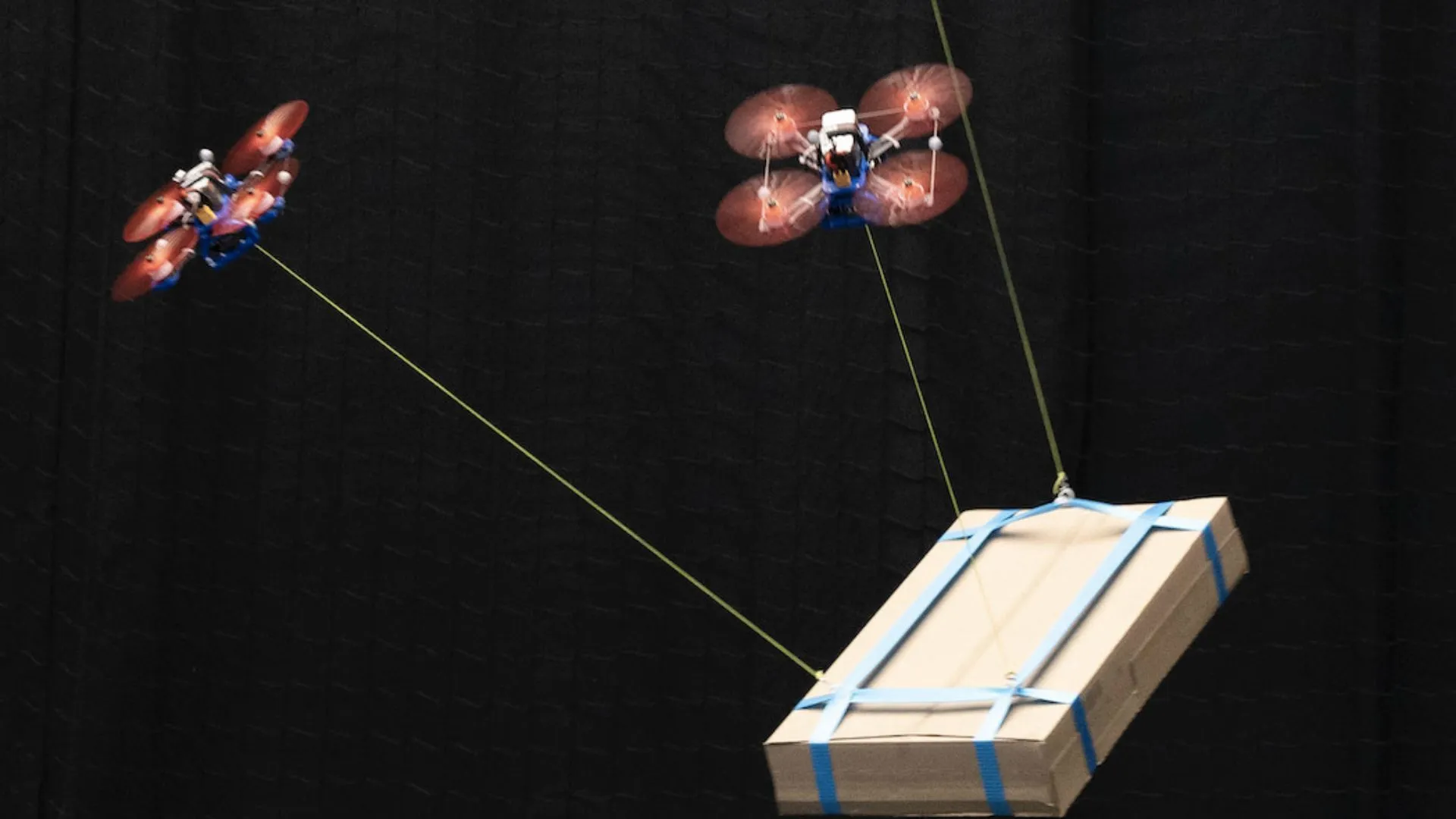Copyright Interesting Engineering

Researchers have developed a new algorithm that can help multiple drones work together to control and transport heavy payloads. Developed by scientists at TU Delft, the algorithm can help perform tasks at hard-to-reach infrastructure, like offshore wind turbines. With often harsh weather, limited payload capacity, and unpredictable contact with the environment, it is difficult for current drones to operate safely and effectively. Single drone can only carry a limited load “A single drone can only carry a very limited load,” said Sihao Sun, robotics researcher at TU Delft. “This makes it hard to use drones for tasks like delivering heavy building materials to remote areas, transporting large- amount of crops in mountainous regions, or assisting in rescue missions.” The TU Delft team revealed that they have overcome these limitations with their new system, where multiple drones are connected to a payload via cables, thereby carrying much heavier loads. By adjusting their positions in real time, the drones can not only lift and transport the heavy object but also control its orientation, which is crucial for precise placement in complex environments. “The real challenge is the coordination,” says Sun. “When drones are physically connected, they have to respond to each other and to external disturbances like sudden movements of the payload in rapid motions. Traditional control algorithms are simply too slow and rigid for that.” New algorithm adapts to changing payloads The research team also claimed that their new algorithm is fast, flexible, and robust. It adapts to changing payloads and compensates for external forces without requiring sensors on the payload itself, which is an important advantage in real-world scenarios. They also pointed out that existing control algorithms for multilifting systems only enable low-speed and low-acceleration operations. Published in Science Robotics, the study offers a solution to substantially enhance the agility of cable-suspended multilifting systems. Unlike traditional cascaded solutions, we introduce a trajectory-based framework that solves the whole-body kinodynamic motion planning problem online, accounting for the dynamic coupling effects and constraints between the quadrotors and the load. “The planned trajectory is provided to the quadrotors as a reference in a receding-horizon fashion and is tracked by an onboard controller that observes and compensates for the cable tension. Real-world experiments demonstrate that our framework can achieve at least eight times greater acceleration than state-of-the-art methods to follow agile trajectories,” said researchers in the study.



